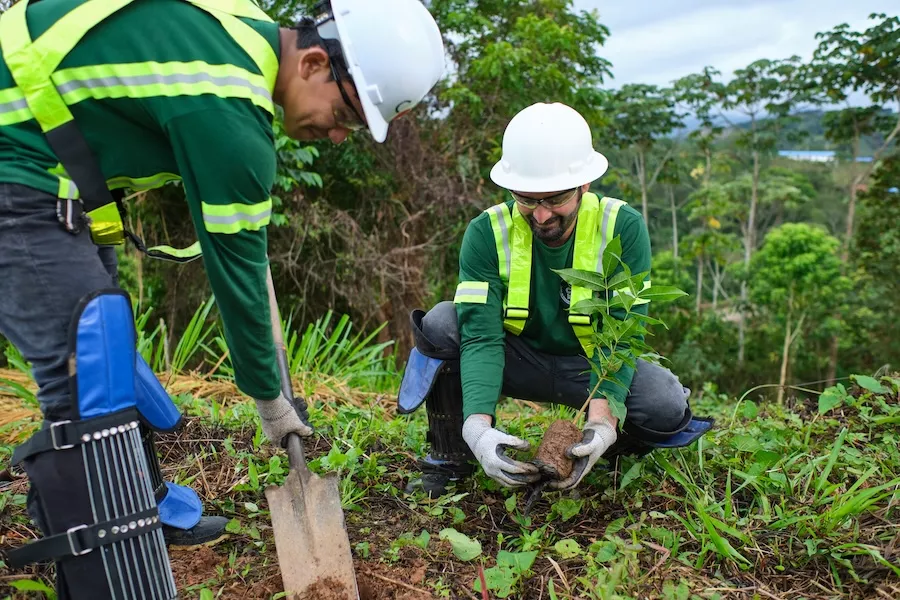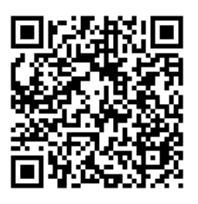Why Nature Is Demanding We Pay Attention
1 October, 2025
Let’s be honest, ‘biodiversity impacts’ and ‘nature-related risks’ aren’t phrases that the gold market has been overly preoccupied with or focused on in the past. But if we care at all about stable societies, thriving economies, and a future that isn’t, well, grey and grim, then this issue – the health of ecosystems and the planet’s flora and fauna – is well worth our attention. It has been something we at the World Gold Council (WGC) have now started to look at more closely. And we’re pleased to find that many players in the gold mining industry were well ahead of us.
The World Gold Council has, over the last year or so, expanded its research focus from climate change to a much wider environmental lens, recognising that climate stability and socio-economic development are inseparable from healthy ecosystems and biodiversity. In short: you can’t have a stable climate or a resilient economy if you’re trashing the natural world. Sadly, the last half century has indeed been a story of reckless destruction and degradation. The World Wildlife Fund recently reported that since 1970 there has been a catastrophic 73% decline in the average size of wildlife populations.
But nature and biodiversity loss aren’t just “green” issues. They are business issues too. Many sectors of the economy are deeply dependent on ecosystem services: water, pollination, soil health, and more, underpin a substantial portion – up to half, according to PwC – of global GDP. When these systems are degraded, it’s not just wildlife that suffers; it’s jobs, communities, and economies.

Image courtesy of Equinox Gold
This therefore matters deeply to all sectors, all value chains, and all their stakeholders. Industries and markets need to better understand their relationship with nature - both the risks and vulnerabilities that may affect them and, also, their potential contributions to ecosystem protection, resilience and rehabilitation.
To understand this relationship as it relates to gold – and, specifically, gold mining where the impacts are likely most concentrated - we have spent the last year (with the research team from S&P Global Sustainable1) mapping out the sector’s global ‘nature risk profile’. The findings from our analysis are described in our new report (Gold, Nature and Biodiversity) which also details a range of practical responses and solutions implemented at or around gold mine locations.
It is often suggested that, unlike climate change mitigation – focused on the reduction of greenhouse gases – nature and biodiversity are far too complex to measure in a consistent way. But using a recently defined methodology (that, whilst still evolving, is already being presented as a solution to institutional investors and policy makers), we’ve been able to arrive at a detailed overview of sectoral impacts and vulnerabilities.
The overarching approach in our new report can be seen to mirror the approach we developed a few years ago when looking at physical climate impacts and local adaptation and resilience responses at and around gold mine sites. For a global risk overview, we need to adopt a robust methodology that can be applied to diverse sites and locations. But to understand what ‘good practice’ and practical solutions look like, we also need to focus on site-specific details and actions. Fortunately, mining company disclosures on these matters have evolved rapidly and, looking at our Member companies’ outputs, we found a wealth of examples to explore in more detail.
We were, frankly, pleasantly surprised that there is already substantial evidence in company reporting on nature-related issues of a widespread commitment to transparency, good practice, protection and rehabilitation — not just minimising harm but actively restoring nature where possible. The report describes a wide range of WGC Member-led initiatives to protect a wide range of species – from buttercups to bats, from cacti to chimpanzees. Hearteningly, this often extends to locations well beyond the mine site, with many solutions seeking to address negative impacts not directly associated with mining operations or current activities. Acknowledgement of historical impacts – from mining but also from other economic activities – and a sensitivity to communities’ relationships with local ecosystems were a feature of many reported initiatives.
The report also highlights the importance of frameworks like the Kunming-Montreal Global Biodiversity Framework and the Task Force on Nature-related Financial Disclosures (TNFD). These aren’t just buzzwords — they’re already shaping how companies disclose, manage, and reduce their impacts on nature.
And underpinning these drivers of change is a growing recognition that the 'Big Picture' challenges we face in defining and planning for a sustainable future are intrinsically interconnected, with nature and biodiversity as ‘foundational’. They underpin food security, water supply, climate regulation, and the resilience of communities. Lose them, and you lose the building blocks of prosperity and stability. When these systems break down, costs rise, risks multiply, and economies become more fragile.
The Gold, Nature and Biodiversity report is our first step in establishing a solid base of data and understanding to support further moves across the gold industry to respond to nature-related risks and define practical solutions. Ultimately, we hope that this will also encourage further industry actions to help shift us from a position of inflicting no further harm to a more positive outlook. Simply put, we now recognise that the health of our economies and societies depends on the health of the natural world—and that the gold sector, like all sectors, has both a responsibility and an opportunity to lead.
So, next time you hear us talk of ‘nature’ and ‘biodiversity’, don’t think we’re discussing something remote and unrelated to your daily business or your daily life. Rather, think of these discussions (and this research) as examining the ultimate insurance policy for our shared future. Tackling these issues isn’t just the job of governments or NGOs. It’s a shared responsibility, and business has a crucial role to play — not just in reducing harm, but in driving positive change and supporting the resilience of people and planet. It may be surprising to some, but it looks like responsible gold miners may have been considering these issues for quite some time.
Disclaimer
Important information and disclaimers
© 2025 World Gold Council. All rights reserved. World Gold Council and the Circle device are trademarks of the World Gold Council or its affiliates.
All references to LBMA Gold Price are used with the permission of ICE Benchmark Administration Limited and have been provided for informational purposes only. ICE Benchmark Administration Limited accepts no liability or responsibility for the accuracy of the prices or the underlying product to which the prices may be referenced. Other content is the intellectual property of the respective third party and all rights are reserved to them.
Reproduction or redistribution of any of this information is expressly prohibited without the prior written consent of World Gold Council or the appropriate copyright owners, except as specifically provided below. Information and statistics are copyright © and/or other intellectual property of the World Gold Council or its affiliates or third-party providers identified herein. All rights of the respective owners are reserved.
The use of the statistics in this information is permitted for the purposes of review and commentary (including media commentary) in line with fair industry practice, subject to the following two pre-conditions: (i) only limited extracts of data or analysis be used; and (ii) any and all use of these statistics is accompanied by a citation to World Gold Council and, where appropriate, to Metals Focus or other identified copyright owners as their source. World Gold Council is affiliated with Metals Focus.
The World Gold Council and its affiliates do not guarantee the accuracy or completeness of any information nor accept responsibility for any losses or damages arising directly or indirectly from the use of this information.
This information is for educational purposes only and by receiving this information, you agree with its intended purpose. Nothing contained herein is intended to constitute a recommendation, investment advice, or offer for the purchase or sale of gold, any gold-related products or services or any other products, services, securities or financial instruments (collectively, “Services”). This information does not take into account any investment objectives, financial situation or particular needs of any particular person.
Diversification does not guarantee any investment returns and does not eliminate the risk of loss. Past performance is not necessarily indicative of future results. The resulting performance of any investment outcomes that can be generated through allocation to gold are hypothetical in nature, may not reflect actual investment results and are not guarantees of future results. The World Gold Council and its affiliates do not guarantee or warranty any calculations and models used in any hypothetical portfolios or any outcomes resulting from any such use. Investors should discuss their individual circumstances with their appropriate investment professionals before making any decision regarding any Services or investments.
This information may contain forward-looking statements, such as statements which use the words “believes”, “expects”, “may”, or “suggests”, or similar terminology, which are based on current expectations and are subject to change. Forward-looking statements involve a number of risks and uncertainties. There can be no assurance that any forward-looking statements will be achieved. World Gold Council and its affiliates assume no responsibility for updating any forward-looking statements.
Information regarding QaurumSM and the Gold Valuation Framework
Note that the resulting performance of various investment outcomes that can be generated through use of Qaurum, the Gold Valuation Framework and other information are hypothetical in nature, may not reflect actual investment results and are not guarantees of future results. Neither World Gold Council (including its affiliates) nor Oxford Economics provides any warranty or guarantee regarding the functionality of the tool, including without limitation any projections, estimates or calculations.
